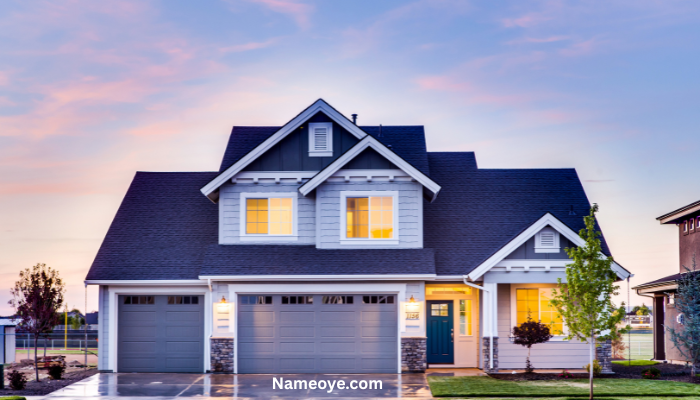Introduction to Modular Electrical Houses
In the dynamic world of modern construction, modular electrical house solutions are making waves. These prefabricated structures enhance construction efficiency, offering new possibilities for various infrastructural needs. These structures provide adaptable and reliable solutions, from bustling urban environments to secluded rural locations. The modular approach integrates cutting-edge technology with practical design, catering to functional and aesthetic requirements, making it a versatile choice in today’s ever-evolving construction landscape.
Modular electrical homes appeal because they greatly surpass traditional building techniques. These prefabricated buildings are designed in underregulated settings, providing unmatched quality control and accuracy. They offer a sustainable and reasonably priced substitute for conventional building methods at a time when waste reduction is vital and efficiency is everything. Modular construction takes the front stage as the sector moves toward more automated and efficient solutions, altering our conception and approach to constructing projects and establishing new future norms.
Advantages of Modular Construction
Modular building improves project realization by providing significant advantages over conventional approaches. One critical benefit is its capacity to drastically cut building schedules. Since modules are manufactured in a factory environment, outside variables like weather have little effect on advancement. This control over the building environment minimizes erratic setbacks, thereby guaranteeing a speedier, more straightforward construction procedure.
In specialized applications like an e house—a prefabricated electrical house used in industrial settings—modular techniques allow for efficient integration of complex systems under controlled conditions. Additionally, scale efficiency in manufacturing multiple identical units can lead to cost savings, passing these benefits to project developers and homeowners alike.
Cost Efficiency and Speed of Deployment
A hallmark feature of modular construction is its remarkable speed and cost-efficiency. Developers can initiate simultaneous site preparation and module fabrication by constructing in a controlled, off-site environment, slashing overall project timelines. Faster completion times translate to reduced labor costs and shorter financing periods, decreasing the project’s financial burden.
Studies show that, compared to conventional techniques, modular buildings can accelerate delivery by up to 50%. This efficiency appeals to small-scale residential and large-scale commercial projects since it meets the worldwide demand for fast urban growth and infrastructure improvements.
Environmental Benefits
With sustainability taking center stage in global policy discussions, modular electrical houses emerge as a beacon for environmentally friendly construction practices. They are designed to operate within frameworks that emphasize waste reduction and resource optimization. The controlled production environment minimizes construction waste, and efficient recycling protocols are often employed.
These practices significantly contribute to lowering the carbon footprint associated with building projects, as fewer raw materials are wasted and reduced transportation needs further cut emissions. Moreover, using sustainable materials and energy-efficient designs, modular houses advance the broader goals of environmental stewardship. In an era when ecological considerations are paramount, these solutions offer practical benefits and peace of mind to environmentally conscious consumers.
Versatility and Design Flexibility
Modular electrical homes are unique in the building sector because of their inherent design adaptability. Depending on design criteria, modular buildings allow one to explore more avant-garde residential styles or create clean, modern urban homes. Architects and engineers working together will enable the creation of modular buildings that effortlessly combine aesthetic concerns with practical requirements.
Beyond first ideas, modular buildings are future-proof solutions in a fast-changing architectural scene since they may be enlarged or rearranged to fit evolving needs. Their ability to fit particular criteria redefines urban development and rural planning opportunities, guaranteeing long-lasting satisfaction among developers and homeowners alike.
Addressing Common Concerns
Despite the various benefits, some people remain skeptical of modular buildings. Common questions are about their structural stability and lifetime. Still, strict technical standards and cutting-edge materials guarantee that these buildings, in terms of longevity and safety, are comparable to—if not better than—their conventional counterparts. The prefabrication method guarantees constant adherence to safety rules and robustness under several conditions by subjecting every component to strict quality inspections.
This robust assurance alleviates consumer apprehensions and highlights the reliability of modular options. As the visibility and success of modular buildings continue to grow, consumer confidence is steadily increasing, supported by numerous case studies demonstrating excellent long-term performance and adaptability.
Future Trends in Modular Construction
The future of modular building seems positive, with trends predicting more innovation and refinement. Smart technology will soon be included in modular homes to offer improved connectivity, automatic energy control, and security systems. These developments easily incorporate modern technologies into the living environment, matching modular buildings with the growing innovative housing industry.
Furthermore, modular buildings present a workable answer to housing shortages as metropolitan areas deal with issues of rapid population growth. Because of their scalability and adaptability, modular solutions are perfect for tackling urban sprawl and producing quality homes in record timeframes. Such future developments highlight the increasing importance of modular building in producing livable and environmentally friendly metropolitan settings.
Conclusion: The New Era of Construction
Modular electrical houses stand ready to lead the charge toward a more efficient and sustainable future as the building scene changes. Their transforming power resides in combining fast building capacity with significant environmental advantages to provide a workable route toward a more affordable, environmentally friendly building paradigm. These systems’ adaptability and flexibility help to emphasize their forward-looking nature even more as solutions in a society needing creativity and sensitivity to economic and environmental problems.
Modular techniques have great potential to change urban environments and satisfy world housing needs as they acquire popularity and progressively merge into conventional building techniques. This signals a new phase in the building where sustainability and utility meet to create the conditions for ongoing industry innovation and development.

